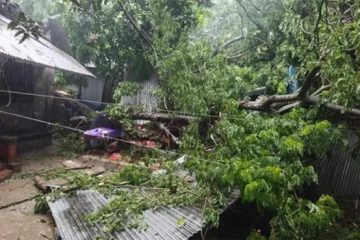Primary Education in A Shambles- 2
One teacher for 55 students
Suranjith Deabnath and Raihan Sabuktagin

Lack of contact hours behind students and teachers at primary level is one of the main reasons behind poor quality education imparted at primary schools across the country. Lack of enough — and trained — teachers and insufficient space at schools lead to the poor performance of children.
The government survey ‘National Assessment of Pupils of Grades three and five-2006’ published recently has revealed that around 70 percent of children who complete primary school cannot read, write or calculate properly.
According to international standards, contact hours between teachers and pupils at primary level should be at least 900 hours annually. However, in Bangladesh children in classes I and II get only 500 hours annually to interact with their teachers while students from classes III to V get about 700 hours, according to statistics of the Directorate of Primary Education (DPE).
One of the main reasons behind lesser contact hours is double shifts run at 90 per cent of the government primary schools and a low teacher to student ratio. DPE statistics show that the average teacher-student ratio is 1:55.
Private research organisations claim an even lower ratio of 1:85.
These factors all pull down the standard of education imparted at primary level.
The Second Primary Education Development Programme (PEDP-II) recommends that at least 90,000 new teachers are recruited while 60,000 new classrooms are built to enable the existing schools to accommodate all students in a single shift by the year 2010.
Renowned academician Prof Dr Zillur Rahman Siddique said, “The future of the nation is dark because primary students lack adequate academic knowledge.
He identified unnecessary holidays at primary schools as another factor lowering contact hours.
Other experts also suggest that the government curtail these “unnecessary” holidays at schools to increase the contact hours between students and teachers.
Power and Participation Research Centre (PPRC), a private research organisation, in its annual report-2008 titled ‘Primary Education Halkhata’ recommended sliming down long holidays — during the two Eid festivals, summer vacation and ramadan vacation.
At present in government primary schools, pupils get 9 days as holidays during the two Eid festivals, 15 days as summer vacation and 20 days off in ramadan. The report suggested 7 days for the two Eids, 5 days in summer and 10 days for ramadan.
The reports also recommended that each lecture be of 50-minutes to one-hour duration. At present, teachers at different schools say that they only have 25 to 35 minutes allocated for each class.
The National Curriculum and Textbooks Board routine puts only the sixth period of a school at 25 minutes while it states 40 minutes each for the three main subjects of Bangla, English and Mathematics.
In light of the situation, the Primary and Mass Education Ministry has recently introduced the concept of a local calendar.
Badrul Alam Tarafdar, secretary in charge of Primary and Mass Education, told The Daily Star, “Upazila education officers, in consultation with teachers, students and guardians can change the academic schedule and class routines so that students get sufficient contact hours in a school.”
The reality at schools remains very harsh.
Azizul Islam, head teacher of Shalmara Govt Primary School at Harinchara union under Nilphamary district manages class-III and class-V at the same time each day due to lack of teachers at his school.
The double shift school has three rooms and only two teachers for 260 students. Class-I and Class-II students attend school in the morning while students of classes III, IV and V come during the day shift.
Mohammad Wahiduzzaman Miah, head teacher of Senpara Porbota Govt Primary School at Pallabi under Dhaka Metropolitan Area said that it is ridiculous to expect proper teaching from a teacher who has to teach a topic to more than 70 students at a time and also check their achievements within just 25 minutes.
“Our school has 1200 students and the teacher-student ratio is 1:76. We don’t have any teachers on specialised subjects as music or fine arts though these subjects are in the curriculum,” he said.
“That’s the reality,” he pointed out.
Nazrul Islam Khan, the immediate past director general of DPE, said that it is quite impossible to manage increased contact hours between teacher and pupils in schools running double shifts due to financial limitations of the government.
Considering the facts, academicians and experts think the new government would find it a great challenge to implement its election manifesto regarding primary education — especially to reach cent percent enrolment by 2010 and cent percent literacy rate by 2014.
Courtesy: thedailystar.net




















